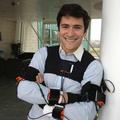Cited By
View all- Hou BNewn JSidenmark LKhan AGellersen H(2024)GazeSwitch: Automatic Eye-Head Mode Switching for Optimised Hands-Free PointingProceedings of the ACM on Human-Computer Interaction10.1145/36556018:ETRA(1-20)Online publication date: 28-May-2024
- Carneiro ACoutinho FMorimoto C(2024)Detection of visual pursuits using 1D convolutional neural networksPattern Recognition Letters10.1016/j.patrec.2024.01.020179:C(45-51)Online publication date: 1-Mar-2024
- Yi-yan WWen CJing-ze TWei-chi HYa-feng NWen-jun YCheng-qi X(2024)Design recommendations of target size and tracking speed under circular and square trajectories for smooth pursuit with Euclidean algorithm in eye-control systemDisplays10.1016/j.displa.2023.10260881(102608)Online publication date: Jan-2024
- Show More Cited By





